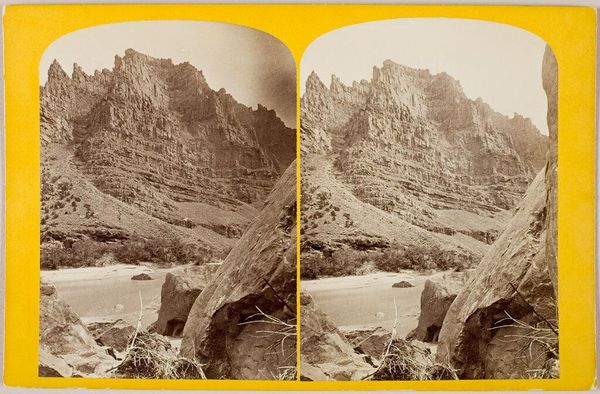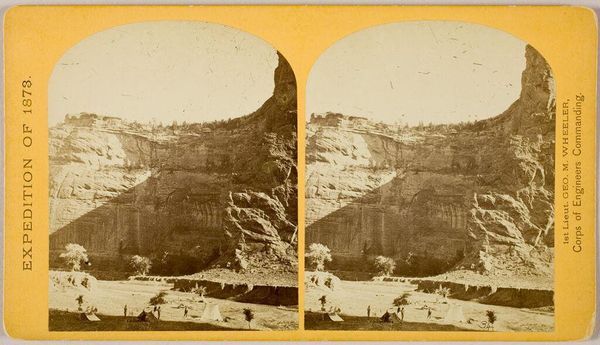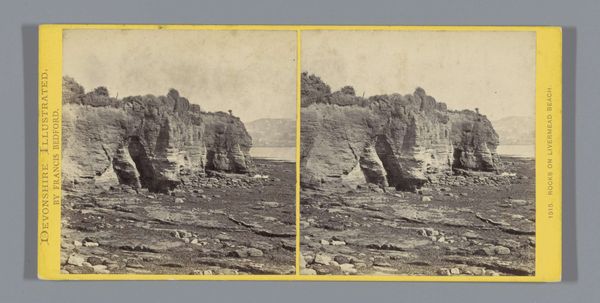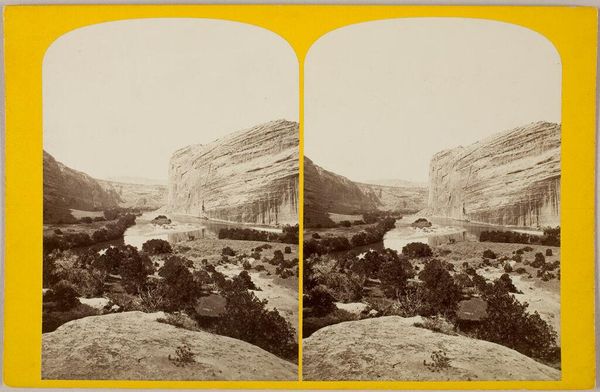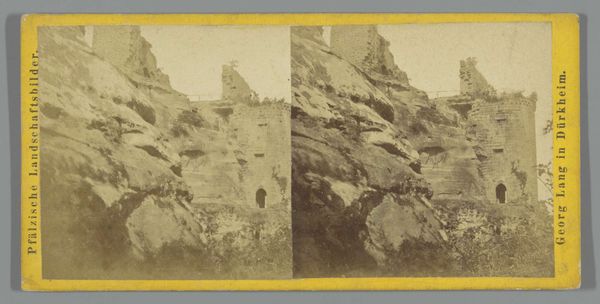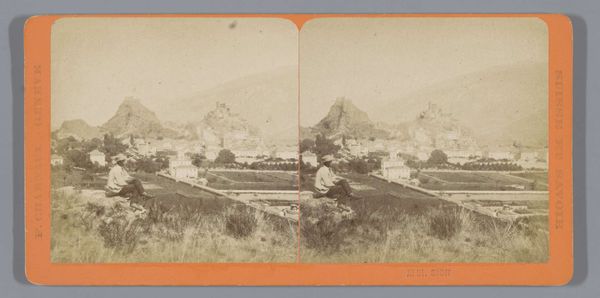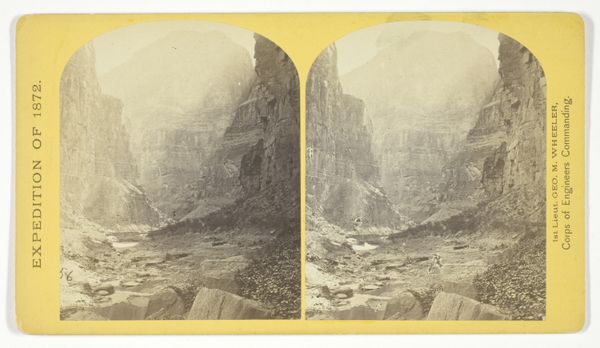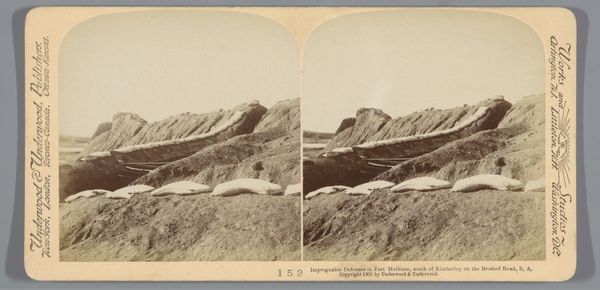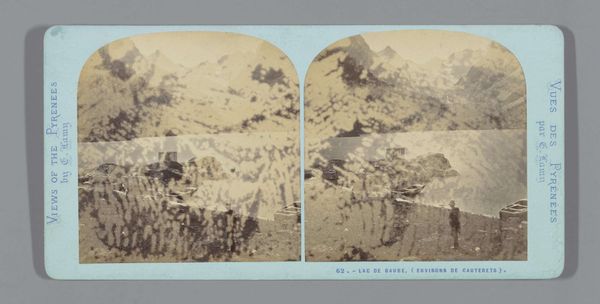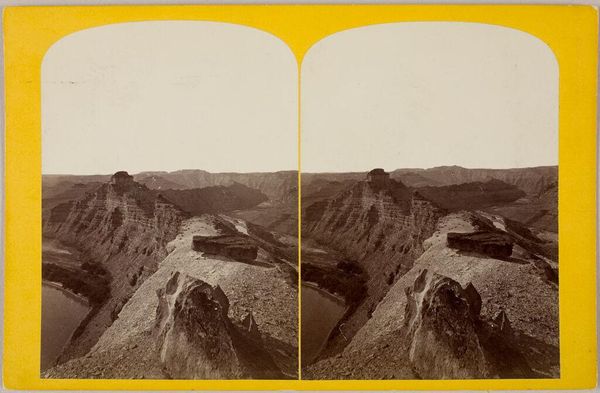
Dimensions: height 85 mm, width 170 mm
Copyright: Rijks Museum: Open Domain
Curator: This is "Gezicht op de kloof bij Blackgang Chine", a gelatin silver print captured by J.W. Nicholson sometime between 1850 and 1880. It offers a peek into a landscape steeped in romantic ideals. Editor: My first impression is how imposing yet fragile the terrain seems, like a decaying fortress. The muted tones give it a melancholic atmosphere. Curator: The stereoscopic format, popular then, reinforces that. Blackgang Chine, a coastal ravine on the Isle of Wight, was being reshaped by natural forces even as Nicholson documented it. This tension was appealing to the Victorian audience who favored dramatic and awe-inspiring landscapes. Tourism developed fast during the Victorian era, boosted by photography and the rise of the seaside as a popular holiday location. Editor: Right, and consider the crumbling cliffs, the steep pathways. The ravine, for them, would be an emblem of time's passage, a symbol of the sublime power of nature gradually wearing away even the most steadfast structures. Perhaps even the fall of civilizations? Curator: Precisely. Nicholson, commercially successful with the production of images such as this, tapped into this fascination by marketing this sense of drama and impending destruction with series available to purchase. Editor: Also, this notion of the "chine" itself – a deep, narrow cleft. Isn't it suggestive, like a gash in the earth, perhaps a raw confrontation with mortality or the primordial? Curator: That's a fair point. Victorian society's rising fascination with natural history further deepened their reverence for dramatic natural formations. The photographic image, seemingly objective, provided ‘proof’ of these sublime vistas. Editor: Thank you, by delving into "Gezicht op de kloof bij Blackgang Chine" and thinking about it beyond just a captured place, we gain an understanding of mortality through sublime iconography. Curator: Absolutely. The picture, produced en masse and circulated to generate revenues, becomes a document in the larger narrative of natural history as both document and marketable memento of natural sublime locations.
Comments
No comments
Be the first to comment and join the conversation on the ultimate creative platform.
